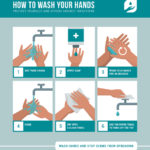4 Ways to Use SMS to Keep Employees Healthy and Productive during a Public Health Emergency

On March 11, 2020, the World Health Organization (WHO) declared COVID-19 (the illness caused by the SARS-CoV-2 virus aka 2019 Novel Coronavirus) a Pandemic. Now, with over 120,000 cases confirmed worldwide, and the virus continuing to spread, it’s more important than ever to keep people informed and encourage good behavior! Text messaging is the optimal way to achieve this, with read rates over 98% for SMS compared to under 30% for email.
The good news is that TextMarks makes it easy for HR and Operations teams to communicate with employees immediately and effectively by sending out mass text messages to the entire company, divisions, departments, shifts, or smaller teams.
TextMarks also provides tips and training for using and promoting your text messaging program. We previously outlined 6 Ways To Use SMS For Internal Communications. Here, we outline 4 new ways to enhance your internal communication SMS messaging strategy to address emerging health challenges, and provide helpful examples of the types of messages you might find valuable to send.
Each of the ideas below can be fine-tuned for your organization and delivered as one or more text messages to your employees. A daily (or weekly, or twice weekly, etc.) announcement by text that arrives at a consistent time is a great way to keep people informed and engaged. Mix and match the following ideas to populate your messaging strategy, and schedule your messages to go out automatically each week!
Clarify Policies & Resources
Your company likely has a lot of work policies and resources available including sick leave, work-from-home, travel, client meetings, etc.
Some of these may be old policies, and some are likely evolving to meet new challenges. Do your employees know and remember all of them?
You can send reminders summarizing policies, linking to documents, and providing HR contact information so people know who to ask for clarifications. Some text message examples:
Reminder: if you have ANY cold or flu symptoms, do not come in to work. Talk to your manager about your options.Notice: No new international travel will be approved for now unless justified as "Essential 1" (see myco.com/intra/travel).Policy Update: Clients visiting our office are currently not permitted above floor 2 until further notice.
Announce Closures and Shift Changes
Whether due to staff outages, decreased demand, supply chain disruption, or other reasons, you sometimes need to make closures and shift changes, and these can often be last minute.
Getting the message to your staff immediately and effectively is essential to production business operations. Some text message examples:
Facilities Notice: Building 2 Cafeteria will be closed for the rest of the week. Center Cafe remains open and stocked with additional food items.SCHEDULE CHANGE: Night shift begins 7pm this week due to light staffing. Overtime may be available -- talk to your manager.
Let Employees Report Concerns
In addition to sending mass text messages to employees, you can use TextMarks services to allow them to report concerns via SMS. This is a great way to get feedback on facilities and policy issues such as bathrooms that are out of paper towels or hand sanitizer, sick leave policies people find confusing, etc.
- Put a sign in the bathroom that says “How are we doing? Text BATHROOM to 72345 to report any issues”
Share Health Tips
Aside from the business-specific messaging strategies we’ve discussed so far, there are a number of health tips that can be shared to keep employees and staff safe and minimize spread of disease.
CDC Interim Guidance for Businesses and Employers has a number of health tips (as well as useful information about preparing in general). Some examples of health tips you might send via SMS:
Avoid touching your eyes, nose and face with unwashed hands, particularly after contact with common touch points such as elevator buttons or door handles.Wash your hands for at least 15-20 seconds after touching a commonly used surface (temperature of the water is not important, but length of wash matters).Always cough or sneeze into a tissue or the bend in your arm.Wipe down cell phones (Clorox wipes or alcohol pads) from time to time as these can collect germs.
We hope you found this article helpful. Please feel free to reach out to us with any questions you may have.

















